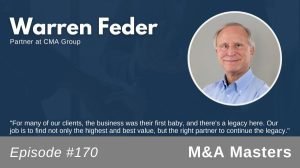The workforce landscape is undergoing a pivotal transformation, marked by the increasing prevalence of older employees—a shift from comprising 11.8% of the workforce in 2000 to an anticipated 23% by 2030. This demographic evolution is not merely a trend; it is a profound reality with far-reaching implications for workforce management, strategic policy formulation, and the very fabric of organizational culture. As we delve into this demographic tale, it becomes clear that the aging workforce is reshaping workplace dynamics, necessitating a reevaluation of how businesses approach talent management, diversity, and inclusion.
The Unfolding Narrative of Mature Workforce Integration
The rise in mature workers within the workforce injects a rich vein of experience and knowledge into the business ecosystem. This demographic shift is double-edged, presenting a unique set of opportunities and challenges for employers. The intrinsic value of mature workers is irrefutable, offering unmatched depth of experience, reliability, and a nuanced understanding of business operations. However, integrating this evolving workforce demographic demands adaptive strategies that acknowledge and cater to the distinctive needs and invaluable contributions of older employees. This encompasses a broad spectrum of initiatives, from reimagined career development pathways to enhanced health and wellness programs, all aimed at fostering an environment that champions productivity and engagement across diverse age brackets.
Strategic Imperatives for Harnessing the Potential of an Aging Workforce
The journey towards fully leveraging the capabilities of an aging workforce calls for proactive, strategic measures that transcend mere physical workspace adaptations. It encompasses a holistic overhaul of training programs, benefits packages, and the introduction of flexible working models. Employers poised to undertake swift, thoughtful adaptations to their policies and practices are likely to reap manifold benefits, including heightened loyalty, diminished turnover rates, and the infusion of rich, diverse perspectives that only seasoned workers can provide.
Forging the Future with an Age-Diverse Workforce
Overall, the narrative of an aging workforce is intricately woven into the future of work, demanding a strategic and empathetic response from businesses. By wholeheartedly embracing this demographic shift and deploying forward-thinking strategies, companies can secure a competitive edge and bolster their resilience in the face of future challenges. The key to success lies in recognizing the unparalleled value of an aging workforce and cultivating an inclusive culture that amplifies the strengths of employees across all age demographics. In doing so, organizations will not only navigate the present complexities, but will also pave the way for a dynamic, innovative, and thriving workplace equipped to embrace the opportunities of tomorrow.
Interested in learning more about navigating the complexities of an Aging Workforce? Reach out to Kirk Aguilera, Managing Partner (National Workers’ Compensation Practice Leader), The Liberty Company Insurance Brokers.












